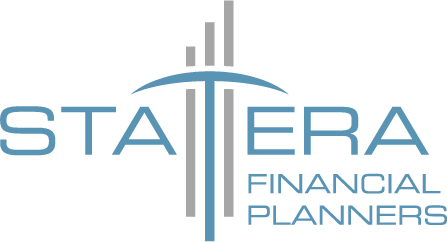A Guide to RESPs, RDSPs, and DTCs in Edmonton

Introduction
Saving for the future can be overwhelming, especially with so many options available. Understanding how different savings plans and tax credits work can help you make the best decisions for your financial situation. For families in Edmonton, RESPs, RDSPs, and DTCs offer valuable opportunities to save for education and support those with disabilities.
Registered Education Savings Plans (RESPs) are designed to help families save for their children's post-secondary education. With government grants and tax-sheltered growth, RESPs make it easier to prepare for rising education costs. Recognizing the benefits of RESPs and how they work is crucial for setting your child up for success.
Registered Disability Savings Plans (RDSPs) provide long-term savings for individuals with disabilities. These plans offer grant and bond opportunities that can significantly increase savings over time. Understanding how to maximise RDSPs helps ensure financial security for those with long-term disabilities.
The Disability Tax Credit (DTC) is another essential tool that provides tax relief for individuals with disabilities and their families. Knowing how to qualify and apply for the DTC can help ease the financial burden associated with disability expenses. Proper planning can make a significant difference in your financial health and peace of mind.
Understanding RESPs: What You Need to Know
Registered Education Savings Plans (RESPs) are a great way to save for your child's post-secondary education. The money you contribute to an RESP grows tax-free until it is withdrawn to pay for education costs. The Canadian government also offers the Canada Education Savings Grant (CESG), which matches 20% of your annual contributions, up to a maximum of $500 per year.
To open an RESP, you'll need a Social Insurance Number (SIN) for both you and your child. Contributions can be made by parents, grandparents, or other family members. There is no annual contribution limit, but the lifetime contribution limit is $50,000 per beneficiary.
When your child starts post-secondary education, they can withdraw the money as Educational Assistance Payments (EAPs). These payments cover tuition, books, and other education-related expenses. Since EAPs are taxed in the hands of the student, they often pay little to no tax due to low-income levels, making RESPs a tax-efficient way to save for college or university.
Benefits of RDSPs for Long-Term Savings
Registered Disability Savings Plans (RDSPs) are designed to help Canadians with disabilities save for the long-term. Contributions to an RDSP grow tax-free. Additionally, the government provides grants and bonds to enhance your savings. The Canada Disability Savings Grant (CDSG) matches your contributions up to 300%, depending on your family income and contribution amount.
To be eligible for an RDSP, the beneficiary must be eligible for the Disability Tax Credit (DTC), be a Canadian resident, and be under the age of 60. The plan can be opened by the beneficiary or a legal guardian if the beneficiary is a minor or unable to open it themselves.
With RDSPs, you can save up to $200,000 in personal contributions over the lifetime of the plan. Withdrawals made from an RDSP do not affect eligibility for federal disability benefits, making it a secure way to save without losing other financial support.
The earnings, grants, and bonds grow tax-deferred, offering significant long-term growth potential. Utilising RDSPs ensures financial security for individuals with disabilities, providing peace of mind for them and their families.
How to Qualify and Apply for the Disability Tax Credit (DTC)
The Disability Tax Credit (DTC) is a non-refundable tax credit that helps reduce the income tax owed by individuals with disabilities or their supporting family members. To qualify, a medical practitioner must certify that you have a severe and prolonged impairment in physical or mental functions. This impairment must be expected to last for at least 12 months.
To apply for the DTC, you need to fill out form T2201, the Disability Tax Credit Certificate. The form has two parts: one that you fill out and another that is completed by a qualified medical professional. Once completed, submit the form to the Canada Revenue Agency (CRA) for review. Approval can take several weeks or months.
If you qualify for the DTC, you can claim it on your tax return to reduce the amount of tax you owe. Additionally, eligibility for the DTC opens the door to other benefits like the RDSP, Canada Workers Benefit, and Child Disability Benefit. Knowing the steps to apply and qualify for the DTC can significantly ease the financial strain associated with disabilities.
Maximizing Your Savings with Combined Strategies
Combining RESPs, RDSPs, and the DTC can maximize your savings and provide financial security. By leveraging all three, you can cover a wide range of financial needs, from education to long-term disability support.
Start by opening an RESP to save for your child's education. Take advantage of government grants and make regular contributions to maximize your savings. Simultaneously, open an RDSP if you or a family member have a disability. The grants and bonds offered can significantly increase your savings over time.
Don't forget to apply for the DTC. Eligibility for the DTC reduces your tax burden and qualifies you for additional government benefits. Use the tax savings from the DTC to contribute more to your RESP and RDSP.
Planning and coordinating these strategies can offer financial stability and growth. Whether saving for education, supporting a family member with a disability, or both, understanding how to use these tools together can provide peace of mind and financial security.
Elevate Your Child's Future: Education Savings Plans
Planning for the future can seem daunting, but understanding and utilizing RESPs, RDSPs, and the DTC can make a significant difference. Each financial tool serves a unique purpose, from saving for education to providing long-term financial support for disabilities. Knowing how to qualify, apply, and combine these options can help you build a secure financial foundation.
Prepare now to achieve financial stability. Whether it’s saving for your child’s education or ensuring long-term care for a family member with a disability, using the right strategies can simplify the process and maximize your benefits. Plan wisely and make informed decisions to ensure you and your family are financially secure.
Ready to maximize your savings and secure your financial future? Contact Statera Financial Planners—we aim to help you navigate RESPs, RDSPs, and DTCs with our financial planning wealth management services in Edmonton. Call us today to start planning for a brighter future!

As financial planners, we do not provide specific tax and legal advice. You should always consult your accountant and/or lawyer where necessary. Because of the many ways a strategy may be impacted when segmented, we prefer to communicate collectively with your external professionals to ensure that all recommendations and action plans are in the overall best interest of you, with your professionals working with common goals in mind.
You are never obligated to act on our recommendations of products, services, or advice.
